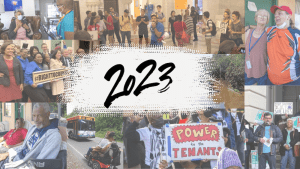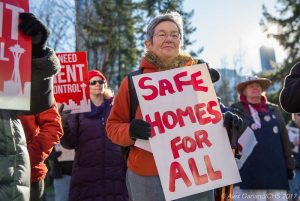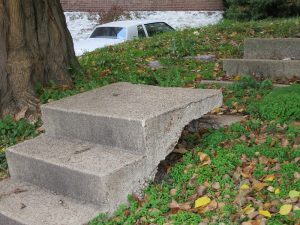
Topic
Financial System
“Income is how you get out of poverty; assets are how you stay out.” How do we build policies, programs, and products that reduce systematic inequality and advance financial security for all?
The Latest

Blockbusting the Big Boys: Bill Would Ban Hedge Funds from Owning Single-Family Homes
The End Hedge Fund Control of American Homes Act is an ambitious attempt to keep private equity's influence out of single-family homes. If passed, the bill will need ownership transparency to be effective.
Explore Articles in this Topic
Search & Filter Within this Topic
filter by Content Type
filter by Date Range
search by Keyword

How the New CRA Rule Will Help, and Where It Falls Short
The assessments that evaluate a bank’s lending practices have improved, but there are several missed opportunities for reform. For one, the new rules won’t incorporate a racial analysis into lending examinations.

Shelterforce’s Top 10 Stories of 2023
What were the biggest Shelterforce stories of the year? We count down the top 10 of 2023.

The FSS Program Was Expanded Beyond Public Housing Authorities—Here’s How It’s Going
In 2018, the Family Self-Sufficiency Program was expanded to privately owned properties receiving project-based rental assistance. Here’s a look at how early adopters have used the program to support residents, and the lessons they learned along the way.

Let’s Act Now to Stop Racism in Real Estate Appraisals
In 2022, a government task force released an action plan about combating bias in the appraisal industry. How can CDFIs fight back against the damage caused by under-appraisals?

‘Renters Are Struggling’: Economists Back Tenant-Led Push for Federal Rent Control
“We have seen corporate landlords—who own a larger share of the rental market than ever before—use inflation as an excuse to hike rents and reap excess profits beyond what should be considered fair and reasonable.”

Poor by Design: SSI Asset Caps
Asset caps on SSI and other benefits keep people with disabilities from building up emergency savings and financial security—or buying a home.

FHA Changes Could Make ADU Construction More Affordable
The Federal Housing Administration may soon allow homeowners to count projected rent toward their qualifying income to build an accessory dwelling unit. While ADU advocates call the change “monumental,” the proposed policy isn’t perfect.

CDFIs Shouldn’t Act Like Banks, But Too Often Do
When receiving bank funding, CDFIs often limit their investments in accordance with bank restrictions. How can reforms to the Community Reinvestment Act help center the needs of underserved communities?

Appraisal Bias Is the Fair Housing Issue of the Day
Newly released data on home appraisal practices is a step forward in the fight against racially biased appraisals. There’s still a long way to go.

Tenants Rights Advance in California
Reaction to the housing crisis in California has led to a series of gains for tenants, including a new Renters’ Caucus.

Egg Prices and Rents—What Do They Have in Common?
Avian flu gave companies cover to price gouge. Could the attention to lack of housing supply do the same for landlords?

NCRC Claims KeyBank Broke Promises, Failed Black Homeowners
Who is responsible for evaluating whether groups adhere to promises made in a community benefits agreement (CBA)? Is there any recourse for those who don’t get what they were promised? And what lessons can we take away from the KeyBank CBA?
